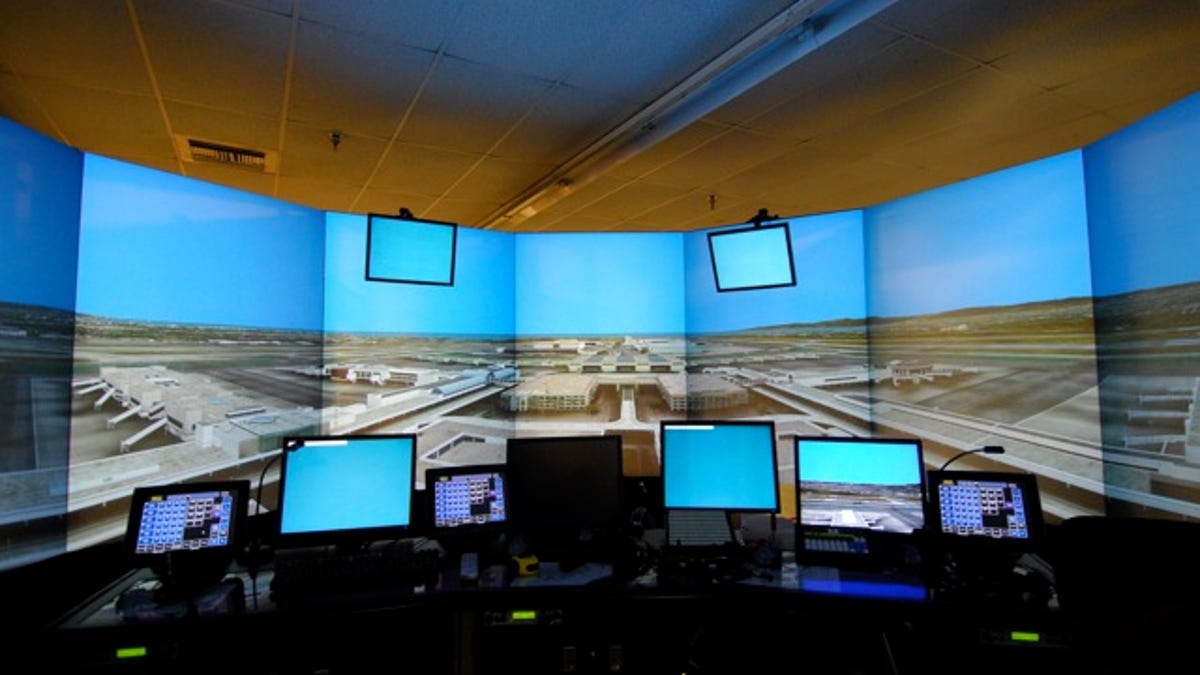Making air traffic control more efficient
Adacel, an Australian company with headquarters in Orlando, Fla., says its software can make flying better through more effective training systems.

ORLANDO, Fla.--If you've ever flown on a commercial airline, you've probably wondered how air traffic controllers do their jobs.
There's certainly lots to it, but increasingly, software from a company called Adacel is behind it all.
The company was originally Australian, but relocated here. It employs several dozen people to create software used by civilian aviation agencies like the FAA in the United States and its counterparts in other countries to do a better job managing the ever-growing amount of airplanes flying today.
I visited Adacel here Thursday as part of Road Trip 2008, my voyage of several thousand miles through the South in search of interesting destinations.
To date, Adacel's major product has been one that helps agencies like the FAA better manage planes that are traveling long-haul flights over oceans. The software uses satellite and data link to talk to aircraft, obviating radar and allowing for more pilot-selected routes than ever before.
The benefit of that is significant, explained Gary Pearson, Adacel's vice president of advanced programs.

For one, Pearson said, pilots will have more control over the selection of the routes they fly. For example, he said that previously, flights from Los Angeles to Melbourne, Australia, had to stop to refuel in Sydney, Australia, because the approved route required only allowed planes to fly that far.
But using Adacel's systems, planes can now make it all the way to Melbourne without stopping, saving huge amounts of fuel and time in the process.
Another benefit of the software is that planes can also fly with much less clearance between each other. That's because there is better recognition of the spatial location of each aircraft and the conditions that will or might develop around them as they fly.
A separate package called MaxSim is designed to help air traffic control organizations better train their employees.
The MaxSim software and hardware is built in several configurations, depending on the customer--be it the FAA, Air Force, Marines, Army, or other organization--but in each case, the system lets trainers put would-be ATC operators in very realistic scenarios where they can perfect their skills without endangering lives.
When I visited Adacel, several employees took their places at the MaxSim setup representing Orlando's airport, and from a few feet back, it was hard to tell they weren't controlling real planes at a real airport.
As Pearson explained, the process of handing planes off through a series of ATC operators is complex (see the video below). It involves many different controllers, each responsible for managing the aircraft at a distinct stage--from taxiing out of a terminal to getting ready for takeoff to just after takeoff and in flight miles away from its origin airport.
MaxSim employs off-the-shelf hardware to make this all work. Because its databases for the airports it works with--dozens in the U.S. alone--are so complete, trainees can work with an extremely realistic representation of the airport they are trying to learn, as well as with what they need to know to work with other ATC operators when handing planes off between jurisdictions.
An important element of MaxSim is that it has built-in artificial intelligence software that takes the place of what are known as "pseudo pilots," or people who have traditionally had to play the role of pilots during ATC training. Now, Adacel says its software is strong enough that its automated pseudo-pilots can provide a seamless learning environment for ATC operators in training.
That means organizations can save huge amounts of money by not having to maintain staffs of pseudo-pilots that can earn $100,000 or more each.
All told, Adacel has deployed 186 MaxSim setups and recently won a $48 million contract to install more at a number of U.S. airports.
A forthcoming system is known as ICE Pilot, or Intelligent Communications Environment. This software system is much like MaxSim except that it's designed to help pilots learn how to communicate better with air traffic controllers.
The system is spurred in large part by new international regulations requiring pilots to be able to speak functional, well-pronounced English when speaking to ATC operators. ICE Pilot helps pilots or would-be pilots learn how to better pronounce and understand crucial English terms.
This was important, Pearson said, because many foreign pilots basically memorize the terms they're supposed to know, but often have trouble when required to communicate outside of those boundaries.
A good example of this is a video Adacel uses to promote its products in which an ATC operator at Kennedy Airport in New York tried desperately to communicate with the pilot of an Air China plane. Through the course of several minutes, it becomes increasingly clear that the pilot has no idea whatsoever what the ATC operator is talking about because the latter spoke outside of the former's comfort zone.
But given that communication often is unpredictable, Adacel is banking on the idea that software that better helps pilots learn what they need to meet the new international regulations will be a big hit.
As Road Trip 2008 continues, please be sure to follow my progress on this blog, as well as on Twitter and on my Qik channel.

